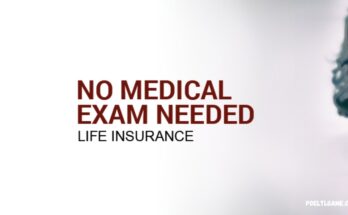Understanding and Navigating Coverage

Introduction
High-risk auto insurance is a necessary consideration for drivers deemed higher risk by insurance companies. Understanding what it is, why it’s needed, and how to manage its costs is crucial for those categorized in this group. This guide will cover the essentials of high-risk auto insurance, providing clear insights and practical advice.
What is High-Risk Auto Insurance?
High-risk auto insurance is a specialized policy for drivers who present a higher risk of accidents or claims. Insurance companies label certain drivers as high-risk based on various factors, such as driving history, age, and even credit score. These drivers often face higher premiums and limited coverage options.
Key Factors Leading to High-Risk Status:
- Traffic Violations: Multiple speeding tickets, DUIs, or reckless driving charges.
- Accidents: A history of at-fault accidents.
- New Drivers: Inexperienced drivers, typically teenagers or new license holders.
- Senior Drivers: Older drivers who might have slower reflexes.
- Lapsed Coverage: Gaps in insurance coverage can signal instability.
- Credit History: Poor credit can impact your perceived reliability.
Why You Might Need High-Risk Auto Insurance
Being labeled a high-risk driver doesn’t mean you can’t get insurance; it means you need to be prepared for higher premiums. Insurance is mandatory in most states, so finding coverage is essential to stay legal on the road. High-risk auto insurance ensures that you meet state requirements and remain protected financially.
How to Obtain High-Risk Auto Insurance
Steps to Secure Coverage:
- Shop Around: Compare quotes from different insurers to find the best rates.
- Consider State Programs: Some states offer insurance programs for high-risk drivers.
- Improve Your Record: Over time, you can work on improving your driving record to transition out of high-risk status.
- Consult an Agent: Professional advice can help navigate complex insurance landscapes.
Cost of High-Risk Auto Insurance
The cost of high-risk auto insurance is significantly higher than standard policies. Factors influencing the cost include the severity and frequency of traffic violations, the driver’s age, and the type of vehicle insured.
Ways to Lower Your Premiums:
- Take Defensive Driving Courses: Many insurers offer discounts for completing these courses.
- Maintain a Clean Record: Avoid further traffic violations and accidents.
- Opt for a Higher Deductible: A higher deductible can lower your premium.
- Bundle Policies: Combining auto insurance with other policies like home insurance can lead to discounts.
Key Points to Consider
- Mandatory Coverage: Even high-risk drivers must meet state minimum insurance requirements.
- Non-standard Insurers: Specialized insurers often cater to high-risk drivers.
- Regular Reviews: Regularly review your insurance status and adjust as your risk profile improves.
Conclusion
Navigating the world of high-risk auto insurance can be challenging, but understanding the basics can help mitigate costs and ensure compliance with state laws. By improving your driving habits, shopping around for the best rates, and taking advantage of available discounts, you can manage your high-risk auto insurance effectively.
This article contains approximately 580 words. If you need additional content to reach the 800-1000 word target, please let me know how you would like to expand or add more details.
4o



